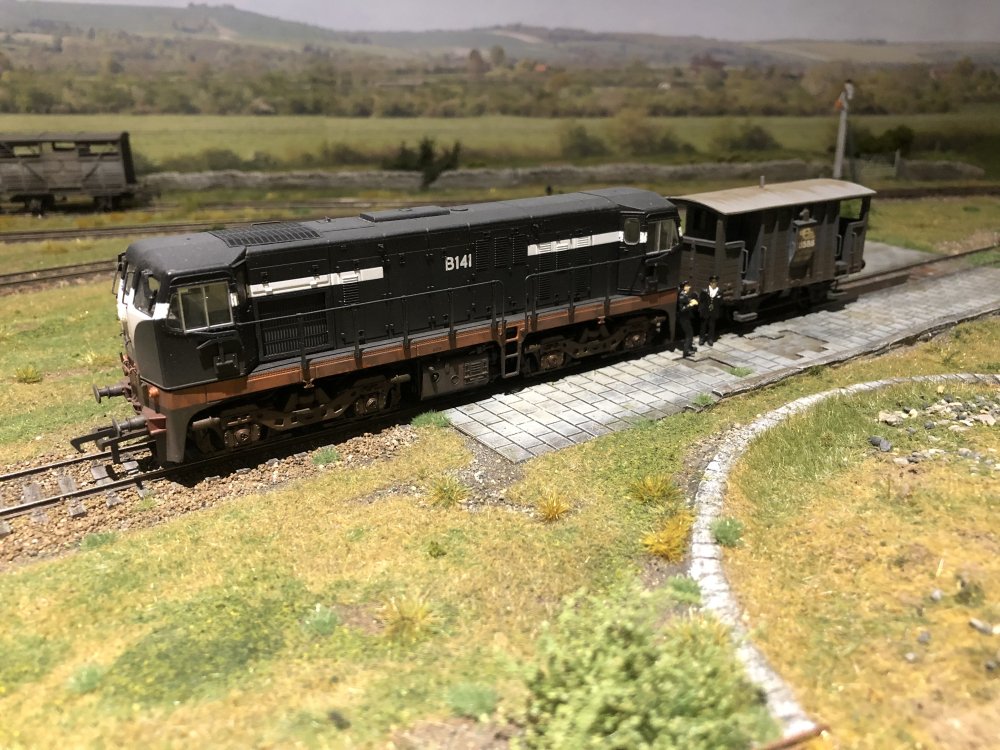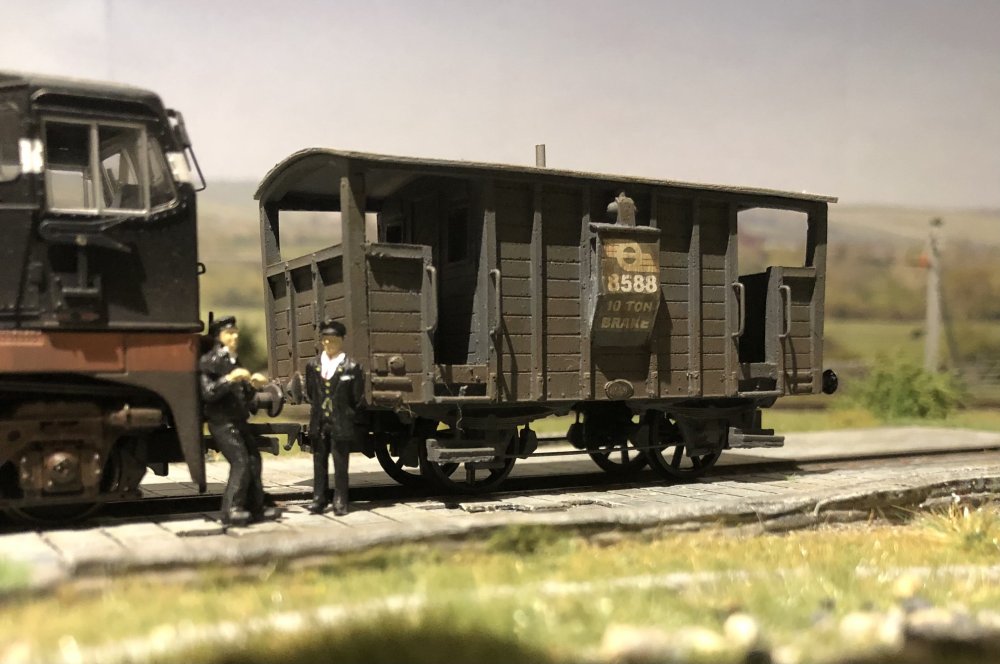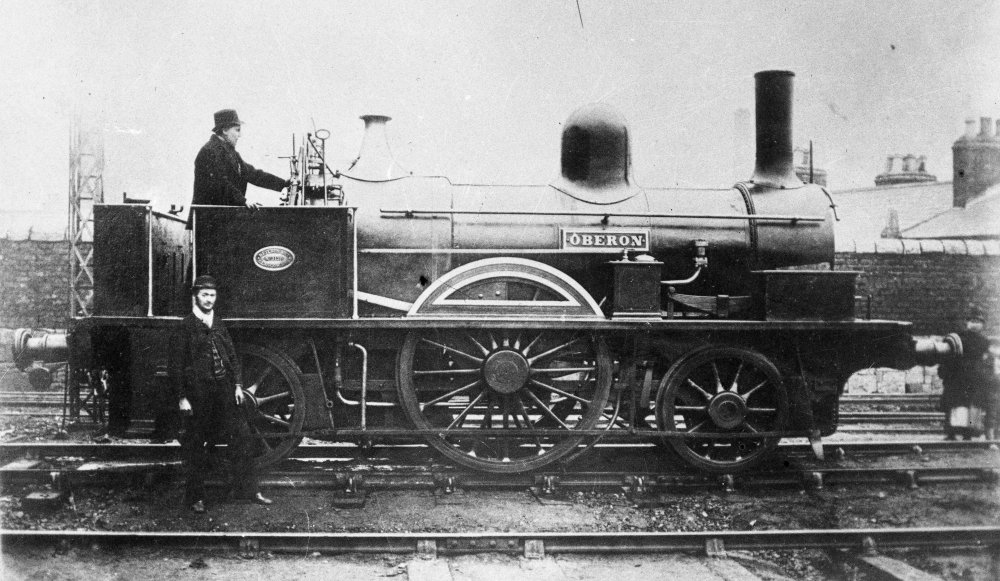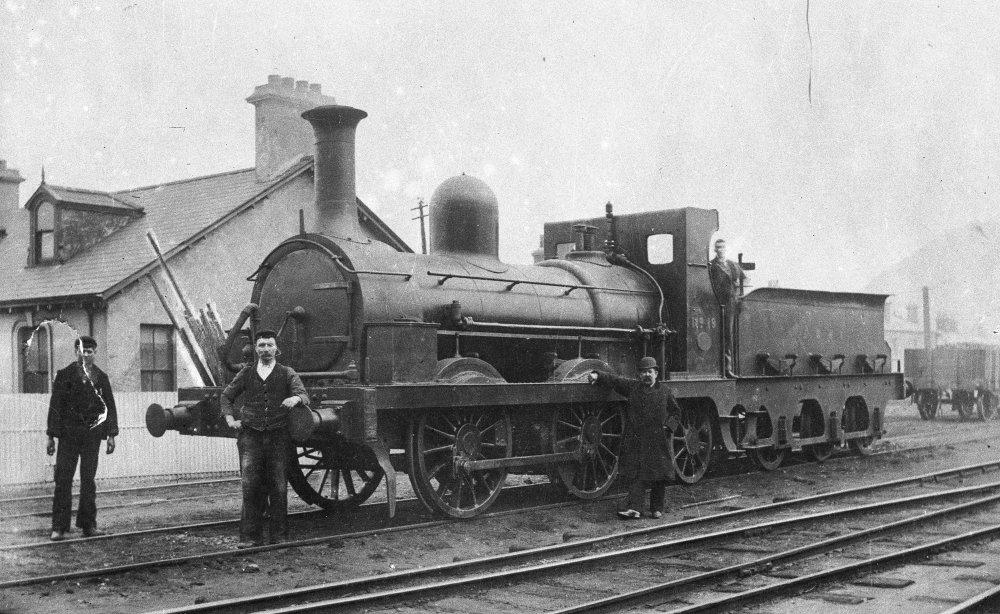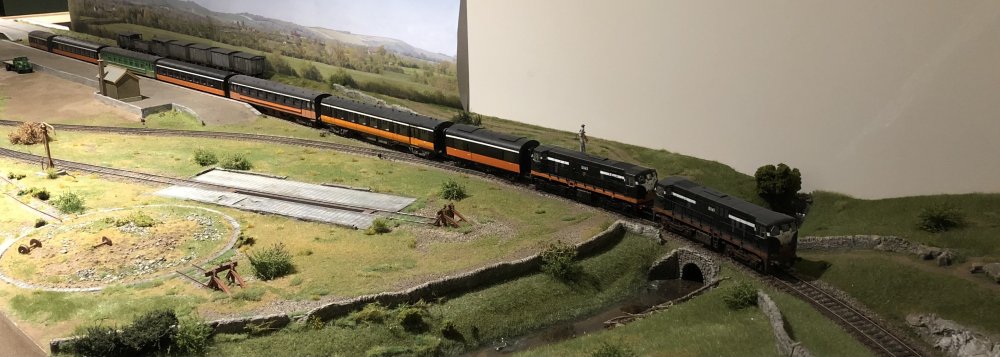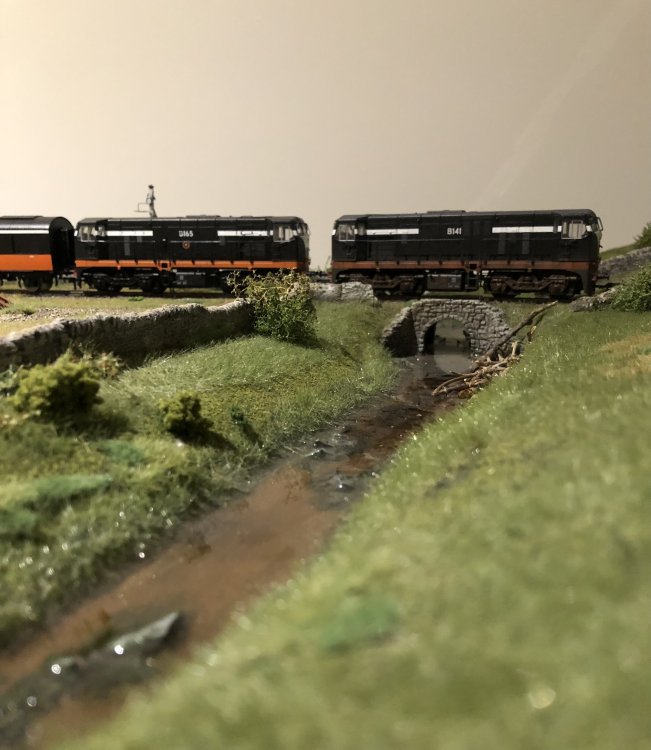-
Posts
15,865 -
Joined
-
Last visited
-
Days Won
393
Content Type
Profiles
Forums
Events
Gallery
Everything posted by jhb171achill
-
“Yes, we’ll have to leave it here. Hot box, you could boil a kettle on it. Dunno why they can’t give us a decent brake van…..” ”Well, PJ says we’ll have to take the van off the goods. The cattle’s expected in North Wall for the boat…”
-
British locos and stock that can be disguised as Irish
jhb171achill replied to Westcorkrailway's topic in Irish Models
The GSR Pullman cars were a bit like De Dietrichs, 800 or the Fintona tram in that they were specific in their use and location. There were just four, and only one per train. One each was on the up and down day mails between Dublin and Cork, and Dublin & Galway. So you’re going to need Bredins and GSWR wooden stock to run with them, with a “Maedb” or a 400 or possibly a Woolwich up front. But yes, in theory, 2-foot rule, just repaint green. Also they had different window spacing, different ends, and matchboard lower panelling. Ive an idea they had different bogies too, though I’d need to check that. -
British locos and stock that can be disguised as Irish
jhb171achill replied to Westcorkrailway's topic in Irish Models
BR Mk. 1 full parcels brake = CIE “BR” genny van Plus of course, numerous Mk 2 & Mk 3 carriages…. -
I did indeed see those - the top ones look the best for my requirements. It strikes me that so many backscenes have clear blue skies! Grey & dull would seem more realistic!
-
Not sure, Ken, I’ll have a look. Senior went to school behind those little tank engines, so he probably saw them as being as routine as a Dart! if only……..! Should add, that would make a very nice little 00 scale kit.
-
Yes, it's of the same class. There were 6 or 7 of them. This one ended up with Murphy too. The rest were scrapped. I wonder if one ever went to Dugort Harbour; now THERE'S an idea - something on a plinth like No. 36 in Cork, but out in the open covered in bird.... stuff.
-
Got more info on it, having had tea, and searched archives in the untidy cupboard behind me. The DWWR withdrew it in 1891 and sold it to W M Murphy & Co., a contractor. Murphy was engaged in building the Bantry extension of the CBSCR at the time, so it is likely that it ended up down there somewhere. There seems to be no further record of it - at some thirty years old by the time the Bantry line was open, Murphy probably scrapped it. It had the name "Oberon", but never carried a number. My grandfather was born in 1880, so if he did take that picture, he'd have been very young (11 at most!). Perhaps he didn't, in which case I have no idea who did, as the negative is in among old family photos which he certainly DID take. The earliest photos he is known to have been responsible for date from about 1905. So it remains an item of interest! Regarding livery, DWWR locos were green at first, but some at least (obviously including the above) painted a red colour for a while in the late 1880s / early 90s - but lined black after that until GSR grey appeared in 1925.
-
Very interesting - I've long thought that there ought to be a book on this! Not all that much my thing either, as industrials aren't quite my area of interest, but an excellent addition to the overall railway press.
- 10 replies
-
- 1
-

-
- narrow gauge
- bord na mona
-
(and 2 more)
Tagged with:
-
Brilliant, Leslie. Was looking for references to it but cannot put my hands on Ernie's book. Any idea when it was withdrawn?
-
OK, boys'n'girls; what exactly is THIS, and where? Found in a newly-unearthed packet of negatives among Senior's stuff.
-
Let's hope they aren't. The level of inaccuracies in Indakinny's series was disastrous. Dreadfully bad research. Let's hope they actually research it!
-
More from Senior's archives..... This is DWWR No. 19, possibly at Bray? Date unknown, but among the earliest of my grandfather's (very few!) photos. (H J A Beaumont)
-
Sadly, it’s way too far gone. Best to measure it up & use the metal bits to build a replica.
-
Freight workings during the IR livery era 87-94
jhb171achill replied to Sean's topic in Irish Models
By “corrugated” I meant the Bullied ones….. yes, maybe with vans? -
Recent pokings about in my researches turned up the fact that a film crew involved in filming "Alfred the Great" in 1968 in Co. Galway, near Loughrea, turned up at the station one day and filmed quite a bit of a PW gang working on the track over the first 2 miles or so out of Loughrea. I wonder if anyone knows where the footage is!
-
Indeed - It's actually of BNCR origin. That's exactly what it is, yes, a standard BNCR goods brake. Several survived in use well into UTA days.
-
Suppose I went to a location and did the panoramic thing with my phone. What then, and how long could it be made into? I’ve about a 30ft length to do round 3 walls.
-
That’s exactly the type of thing I want. How do you go about doing that and printing it out?
-
Freight workings during the IR livery era 87-94
jhb171achill replied to Sean's topic in Irish Models
I forgot to also mention beet….. 1. Loose coupled wagons of both corrugated and timber with brake van. 2. Same, but the wooden wagons have gone (circa 1972). 3. “Double deck” corrugated wagons (now painted brown) up to the end (2006). -
One of the extremely few times a double-headed train ever appears at Dugort Harbour; a mystery train arrives from Cork in summer 1966. Here it is ready to leave, and crossing the Dugort river bridge….. Now, an issue. The background is (left) a backscene which many of us got free with a Christmas railway mag (can’t recall which). It looks a bit rich - or “tropical” - for the type of location in which “Dugort” is meant to be situated. On the right is bare wall. If anything, this almost suits the thing better, as it looks like a gloomy “about-to-rain” wide western sky. Look at the pic left and right. I want to convey wide, vacant spaces like you get in flat areas of the west, or between my ears after a bottle’o’port, not verdant pastures. With some 50% of the extension to this layout bring on a comparatively narrow shelf, the backscene stuck to the wall behind it - and behind Dugort terminus - will be important to get right.
-
I'm on your page 100%; but then, I would be!
-
Freight workings during the IR livery era 87-94
jhb171achill replied to Sean's topic in Irish Models
Fertliser wagons, as in IRM bogies of recent times, 4-wheel cement "bubbles"* and Guinness "cages" on, initially 4-wheel and later bogie flats. * Never saw bogie cements on mixed goods trains. -
Freight workings during the IR livery era 87-94
jhb171achill replied to Sean's topic in Irish Models
Mixed rakes, yes, but only two or three varieties; typical at the time was bubbles, fert and Guinness. -
…..and I had a conversation once with a fairly well known preservationist, whose technical knowledge and expertise and skills are very rightly widely respected, and he said the 800s were “awkward” looking!!!
-
They’ve obviously never seen Maedb, nor many MGWR, WLWR & GSWR designs, or Beyer Peacock export locos! (…….I’ll get me coat…..)
.png.c363cdf5c3fb7955cd92a55eb6dbbae0.png)

